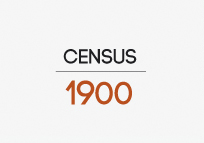




BELGIAN SOCIETY IN HISTORIC CENSUSES
Industrial census 1896
Processing the results
The analysis and interpretation of the census results was completely centralised. Before the data could be processed, it passed through a systematic check. For 11 months, 32 civil servants at the Ministry checked the forms looking for omissions, overlappings and incorrect answers. They consulted the Almanach du commerce in order to detect any uncounted companies. The forms of categories A and B were compared. The civil servants asked for additional information if necessary. Nineteen percent of form A (44,000 out of 237,000 forms) and 28% of form B (193,000 out of 680,000 forms) were sent back to the municipalities for correction.
For the statistical processing of the results, a classification of the industries was drawn up according to the nature of the activities. This list had 858 (855 after correction) sections spread across 18 sectors ("groupes") and 59 subsectors ("sous groupes"). This classification was generally applied when presenting the statistics. The civil servants classified the companies by type of activity based on this list. They based their decision on the description of the enterprises (category A) and the occupations of the labourers (category B). To achieve uniformity, the census agents had a list of industrial occupations that they could use. Moreover, the occupations were made uniform by confronting the forms of categories A and B.
The statistics were calculated in part manually and in part with the assistance of counting machines. This required a total of 132 man-months.